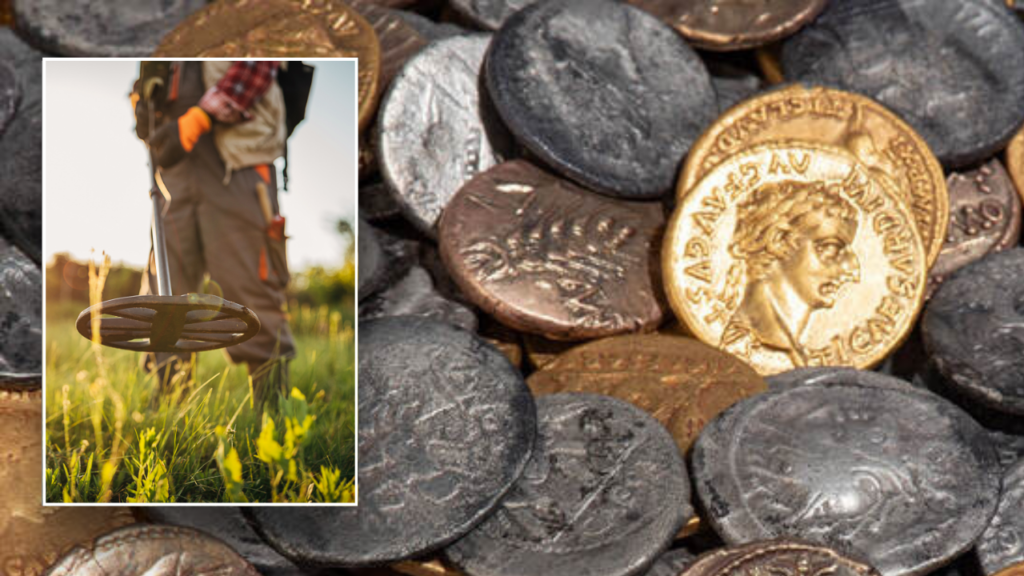In an extraordinary archaeological find, two metal detectorists uncovered a remarkable treasure trove of coins that date back to biblical times. This discovery has been officially documented by the Cultural Heritage Agency of the Netherlands, which shared details about the coins in a press release issued on January 27, 2024. The find comprises a fascinating assortment of 404 gold and silver coins, blending Roman and British origins, making it one of the most unusual finds in recent history.
The find was made by two individuals, Gert-Jan Messelaar and Reinier Koelink, who were exploring the area near Bunnik, situated in the province of Utrecht during the autumn of 2023. While the coins have been in Dutch government possession since their discovery, officials decided to keep the information under wraps until recently, allowing curiosity to build around the potential significance of the cache.
Among the collection are 42 British coins, identified as “staters,” which were minted between 5 B.C. to 43 A.D. These coins, crafted from a mix of gold, silver, and copper, bear the name of Cunobeline, a noted British king who ruled during that time. Such historical references provide invaluable insights into the socio-political landscapes of ancient Britain.
Furthermore, the collection consists of an impressive 288 Roman coins minted between 200 B.C. and 47 A.D. The youngest among these have been traced back to Emperor Claudius, with archaeological investigations revealing that some of these coins had never circulated. According to the translated press release, “In total, 72 Roman gold coins (aurei, singular aureus) were found, dating from 19 B.C. to 47 A.D.” Notably, two of the gold coins exhibited a peculiar characteristic; they had been produced with the same minting stamp and showed no signs of wear, indicating they were untouched since being freshly minted—a rarity that hints at the hoard’s storied past.
The timing of these mintings coincided with Roman military incursions into the British Isles, suggesting that the coins were likely transported back to Bunnik by Roman soldiers after missions in Britannia. The press release elaborated, “It is likely that the coins were brought back to Bunnik by returning Roman soldiers from Britannia after the first conquests: the Roman coins as pay and the British ones as war booty.”
Importantly, the discovery is hailed for underscoring the Lower Germanic Limes’ pivotal role during the Roman conquest of Britannia. This term refers to the ancient border of the Roman Empire which distinguished Germania Inferior from Germania Magna. The find not only highlights the interactions between these two cultures but also enhances historical narratives regarding military expeditions and trade routes during Roman times.
This cache stands out not just for its size but also for its unique composition. It marks the largest of its kind ever located in Utrecht, and intriguingly, it represents the only Roman-British coin hoard known on the European mainland—though similar finds have occurred in the United Kingdom. The statement released by the RCE emphasized the uniqueness of this haul, stating, “These coins form a unique combination of both Roman and British coins, buried in the northern border region of the Roman Empire (the Lower Germanic limes), which at the time ran through the Netherlands.”
The significant archaeological discovery provides an essential window into historical interactions and conflicts between the Romans and the native British population. By studying these coins, historians and archaeologists can better understand the complexities and richness of ancient cultures that influenced the course of history in Europe.
For those interested in more lifestyle articles and updates, additional content is readily available at foxnews.com/lifestyle. Andrea Margolis serves as a writer for Fox News Digital and Fox Business, further enriching the dialogue around significant historical discoveries. Readers with insights or tips can reach out to her via email at [email protected].











